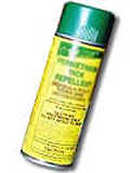|
|||||||||||||||||||
Surveillance/ Infection ControlSurveillance is a vital tool for preventing and dealing with outbreaks. Through surveillance, population densities are monitored, infection rates of the disease vectors are determined, and surveys are conducted. If much is known about a particular disease and how it is spread, public health measures can detect risks before outbreaks occur. This not only saves lives, but also reduces the costs associated with dealing with an outbreak. Large-scale surveillance of bird and mosquito populations can provide information about where the virus is found, and how quickly it is spreading. Surveillance measures can also be conducted on human populations. The New York City Health Department, with the aid of the CDC (Centre for Disease Control), is carrying out an a voluntary community survey to find out more about the disease carried by the West Nile-like virus. By gathering and analyzing blood samples, the department hopes to answer questions about the virus and its related disease, such as: “Who is at the highest risk of exposure?”, and “What proportion of people who got infected with the virus actually became ill?”. Blood samples will be tested for antibodies to the virus. The presence of these antibodies indicates that an individual has been exposed to the virus. Exposure to West Nile-like virus does not always lead to an encephalitis infection. In fact, most people who have been infected with the virus do not develop encephalitis. Other key issues to keep in mind when surveying a disease such as mosquito-borne encephalitis involve environmental factors that affect mosquito populations. Factors such as heavy rainfall and subsequent flooding, higher-than-normal temperatures (including global warming), irrigation, and others can contribute to the spread or reemergence of the disease. For more information about actions taken in New York, please link to the New York City Department of Health - Office of Public Affairs or the CDC, Office of Communication.
This website has been made possible through an unrestricted educational grant from
Pfizer Canada Inc.
|
|||||||||||||||||||
© Copyright 1999-2007 Department of Microbiology, Mount Sinai Hospital, Toronto, Canada. All rights reserved.
|
|||||||||||||||||||





